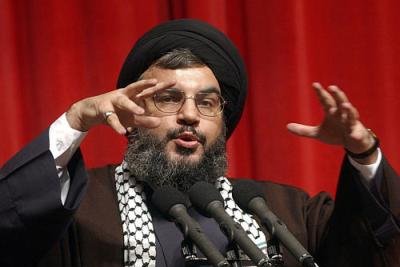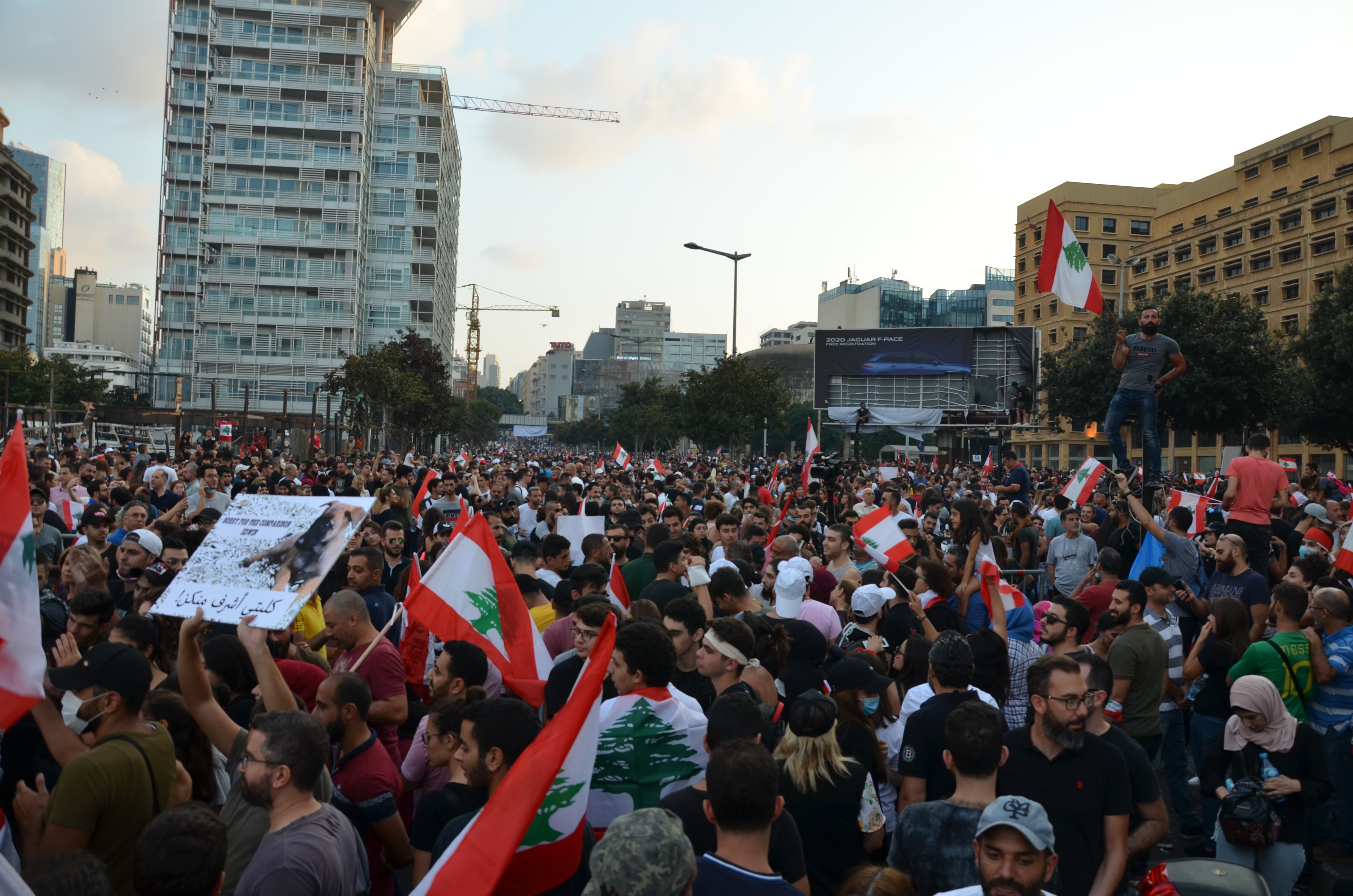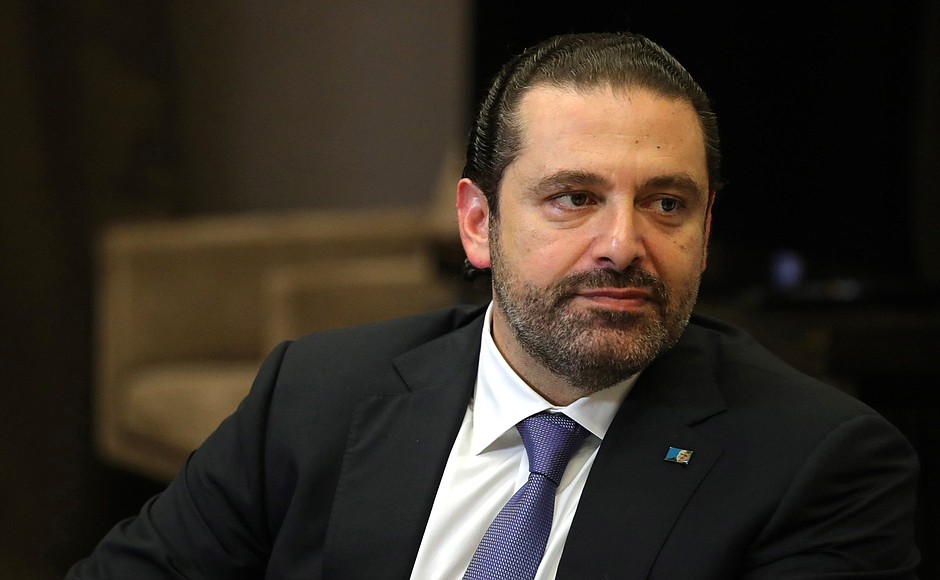On Monday, 28 October, in the face of a massive movement of protestors from all backgrounds, Saad Hariri announced his resignation. This retreat of the government came after two million people – one third of the population – took part in huge protests across the country. Amidst calls for a general strike, people have blocked roads, and shut down banks and schools. Cutting across all the sectarianism that has dominated politics in Lebanon for decades, this movement has done more in two weeks than the corrupt politicians in Lebanon have done in years.
Before he resigned, a desperate reform package was introduced by Hariri in an attempt to appease the movement. It included cutting the salaries of the politicians in half, the creation of an anti-corruption committee, no new taxes or fees in 2020, committing 13.3 million dollars to support poor families, as well as an additional mix of privatising telecommunications, strengthening the border, and abolishing state institutions such as the Ministry of Information.
However, for many protestors the announcement of these reforms was too little, too late. The ruling class in Lebanon is steeped in corruption, living off the backs of the working masses. Conditions are not going to get better with these small concessions, and the people are fully aware of this. That explains why the protests continued.
Now, with the resignation of Hariri, a similar has emerged. His resignation, instead of putting an end to the protests – as the Lebanese elite had hoped – was met by demonstrations led by the chant “All of them means all of them!” This is fundamentally correct, and the revolution must continue until the people themselves run the country. That is the only guarantee the masses have of stopping the corruption and improving the lives of ordinary working Lebanese people.
Sectarianism used by the ruling class to divide
One thing has been clearly proven over the past week: revolution transcends all ethnic divisions. For decades, the Establishment in Lebanon has played a balancing game both with imperialism and between the different factions that make up the ruling elite. From Hezbollah to the Free Patriotic Movement, no party has genuinely represented the people. The masses have grown to understand that they can only rely on each other. Past mass movements have been an example of how change can actually occur within Lebanese society, and this memory is still there.
In 2011, we saw how the government was brought down due to mass protests in an attempt to fight corruption. This is what led to Najib Mikati becoming Prime Minister. A similar movement then sprang up in 2015 protesting against the inability of the government to carry out basic tasks such as refuse collection, with over 100,000 protestors taking part at the height of the movement. Through these unified struggles that cut across all divisions, some change was achieved.
The Lebanese masses have always been at the forefront of real change in the country. In contrast, Lebanon’s political leaders have always used sectarian divisions to sow confusion and disunity among the working masses. It must be enormously disappointing then to Hariri, Nasrallah, and Michel Aoun that this revolution has cut across all religious divisions within society. This uprising has also revealed that Hezbollah, a party which in Lebanon was credited with the defeat of Israel and its withdrawal in 2006, is firmly on the side of the government.
In a televised statement, Hassan Nasrallah openly stated that the “Fall of the government is not something we should strive for” and that “The protests have been hijacked by outside forces.” This is the classic rhetoric that Nasrallah, Hariri, and all the other political cronies in Lebanese society often spin. By pointing the finger at this or that group and building fear among the masses, they seek to distract attention away from the corruption and embezzlement that takes behind the scenes.
 Hezbollah's Hassan Nasrallah and others are trying to divide the movement on sectarian lines / Image: Flickr, Anton Nossik
Hezbollah's Hassan Nasrallah and others are trying to divide the movement on sectarian lines / Image: Flickr, Anton Nossik
There is, of course, always a grain of truth in this, in that foreign powers will try to co-opt and manipulate the protestors in Lebanon and push them down the wrong road. The position of the revolution must be very clear on this: No to Iran or Saudi Arabia, no to Russian and American Imperialism. We must rely only on our own forces and the support of the working class in the Middle East and beyond.
Nasrallah has also urged supporters of Hezbollah and “Shiism” to leave the protests. However, despite this, the protests continue even in Shia dominated areas. This marks an important development. For years, Nasrallah has presented himself as a champion of the Shia poor and a check on corruption in the government. Now, however, faced with a genuine movement from below, Hezbollah is openly trying to derail the revolution! This has become even more glaring in Shia dominated cities such as Nabatiyeh, where protestors were attacked by Hezbollah supporters. These were some of the first acts of violence in the ongoing revolution.
The reason that Lebanon’s elite want to divide this movement is clear. They are scared, and they are right to be so. In Iraq, there are similar developments brewing. Young people, Shia and Sunni, are marching side by side against their government, fighting to change the social and economic conditions they are facing. There is nothing more dangerous than a good example, and these movements risk becoming a generalised trend throughout the region. Young people, in particular, are seeing the hypocrisy in the leadership of their respective countries, their reliance on divisive sectarianism, and are rejecting wholesale the logic (or lack of) of the current system.
Ultimately, sectarianism and the religious system of government in Lebanon is a deceit. When push comes to shove, the Christian, Shia, and Sunni leaders of Lebanon – in spite of claiming to represent the different ethnic communities – have always come together at the top when their vital interests as members of the ruling elite have been placed in danger, and that explains why they tried to maintain this rotten government.
Meanwhile, on the streets, all Lebanese workers are united on a fundamental level around basic economic and political demands. The protestors do not distinguish based on region or religion but accept all who want the overthrow of the government. When it boils down to it, in Lebanon there are only two kinds of people now: the poor and the rich.
The army sympathetic to the masses
Another feature of the protests has been the inability of the government to use the army against the protestors. Despite the continued closure of roads, schools, and banks, the government has refused to use the soldiers to stop protestors. A source from inside the security forces of the government stated: “If they [the protestors] are convinced [by the reforms], so be it, if they are not the roads will remain closed.” Many internationally have lauded the government for this, but it is clear that this is not an act of charity or a decision to abide by democratic principles. Instead, there is a genuine fear that if the army is deployed against the Lebanese masses then the army will join them.
Following Hariri’s resignation, the soldiers and security forces proceeded to move towards clearing the roads and getting businesses running again. Protestors did not stop them, instead they chose to take their protests to several public squares in the city. A representative of the protest movement, which has largely been leaderless, stated: “We will give them 72 hours to form a new government before escalating.”
In general, the soldiers and army have been seen as allies by the protest movement. This is exemplified by several instances of solidarity between the soldiers and the masses. Protestors have been seen handing out white flowers for the soldiers to wear, and singing the national anthem. At one barricade, a soldier was spotted crying as protestors chanted and sang the national anthem. “We are with you!” they shouted to the soldiers.Rank and file soldiers have also been seen defending protestors from Hezbollah militants sent to attack them in Beirut, as has been done in several cities such as Tyre and Nabatiyeh.
It is not hard to understand why the army is so popular in Lebanon. It is a unifying symbol that is not based on sectarianism. After the 1975-1990 civil war, the army was largely a shell. Weak and unable to stem the tide of religious militias like Hezbollah, it was never used to shut down protests or movements in Lebanon. It is also mainly composed of the poorest layers of Lebanese society from all religious backgrounds. As a result, it has gained popularity, with many soldiers having families or relatives on the streets. Thus, demanding that the army fire on protestors would have almost certainly had repercussions within the ranks of the army.
In times of revolution, with most people on the streets, the rank and file soldiers in the army have historically broken ranks and joined the revolution. This is currently happening both in Ecuador and Haiti, so the fear of a split in the armed forces is a very real threat to the leaders of Lebanon. It is vital that if the protests are to continue and escalate, the soldiers are brought into the fold. A serious attempt must be made by protestors to appeal to the soldiers to join, and that can only be done if the movement is properly organised and coupled with programmatic demands for the future.
The youth lead the way: organise the revolution!
So far, we have seen an enormous expression of anger in Lebanese society. Though the roads are now open again after Hariri’s resignation, the problems of Lebanese society remain. Yet there is still hope for genuine change in Lebanon. Through the revolution, students have been heavily participating and are at the forefront of the movement.
Within Beirut itself, Martyrs’ Square has quickly become a hub of participation and organisation within the ongoing movement. During the civil war, Martyrs’ Square was a dividing line in the city between the different religious groups. Now, it has become a place of unity. Inside Martyrs’ Square, students have been organising. Young people from all backgrounds come to join the talks and discussions, where they can voice their frustrations. Even the head of the American university and professors have come down and begun to discuss with the students. These political discussions have been wide-ranging, and it is clear that young people want to organise the movement.
The movement, however, must be organised. Despite heroic efforts, there is a risk that the movement can be derailed. Already, the vultures are circling. Saudi Arabia wants to shore up its support in Lebanon to counter Hezbollah, while American interests are also at play in Lebanon. Meanwhile, Hezbollah is trying to rein in the protests so it can maintain its own power base. These threats must be taken seriously, as we saw in 2011 in Syria how foreign powers can hijack and destroy revolutions.
The best way to guard against this is revolutionary organisation. In all the towns, districts of Beirut, and the villages there must be mass meetings to elect delegates and committees to organise the movement. Instead of relying on the old political families, Lebanese people must organise their own communities in the struggle against corruption in general. Young people are already taking the first steps to do this, with talks of sending leaders of the protest movement to meet with President Aoun.

The most important element for the revolution to succeed is the participation of the working class. Since the resignation of the Prime Minister, some marches have been organised against the Bank of Lebanon with chants such as, “This is a workers’ revolution, down with capital!” These protests have so far been headed by the youth and a small section of the workers, and they must continue. Representatives must be sent to all of the different unions, to the workplaces, and the factories. The working class must join in and organise a mass general strike.
The current civil disobedience has been successful in closing main roads, banks, and schools, but the major corporations have been left untouched. That must end. The billionaires of Lebanon are those that have benefited from this system, and so only the workers en masse have the power to change it. A true general strike would shut down the entire country and force the political establishment to its knees. Corruption must also be fought, with the books of the banks opened so that the masses can keep track of the finances themselves. We cannot trust politicians and bureaucrats to do this for us. All of them means all of them, and that means not just stopping business as usual, but also expropriating the rich in Lebanon and using this wealth to fix schools, water systems, electricity supply, healthcare and all the infrastructure that is required for a civilised existence
As of now, there are still ongoing sporadic protests. Everyone is holding their breath to see what will happen next. The revolution must make the first move. It must not stand still. To stand still in such a situation means to lose momentum and give back the initiative to the ruling elites. They must not be given them time to organise against the revolution or to scheme behind the scenes. There must be a dramatic push to force them, all of them, out of power for good!
Ultimately, only the workers of Lebanon can run the country in a fair and just way and end the crisis. This means electing neighbourhood committees, workplace committees, soldiers’ committees and co-ordinating them up to national level to provide a body that can lead the workers and poor. This body would have to proceed to take over the wealth of the tiny privileged elite, and of the imperialists, and begin to run society for the workers and by the workers.
At the same time such a body would appeal to the workers of Iraq and other countries in the region to spread the struggle throughout the region. Ultimately, the aim is to promote class struggle in all the surrounding countries under the slogan of the Socialist Federation of the Middle East. The choice is clear: either this, or the movement, left leaderless, will begin at some point to recede as we saw in Egypt in 2011 and other, darker forces, will step in. The advanced workers and youth of Lebanonmust not allow that to happen.

